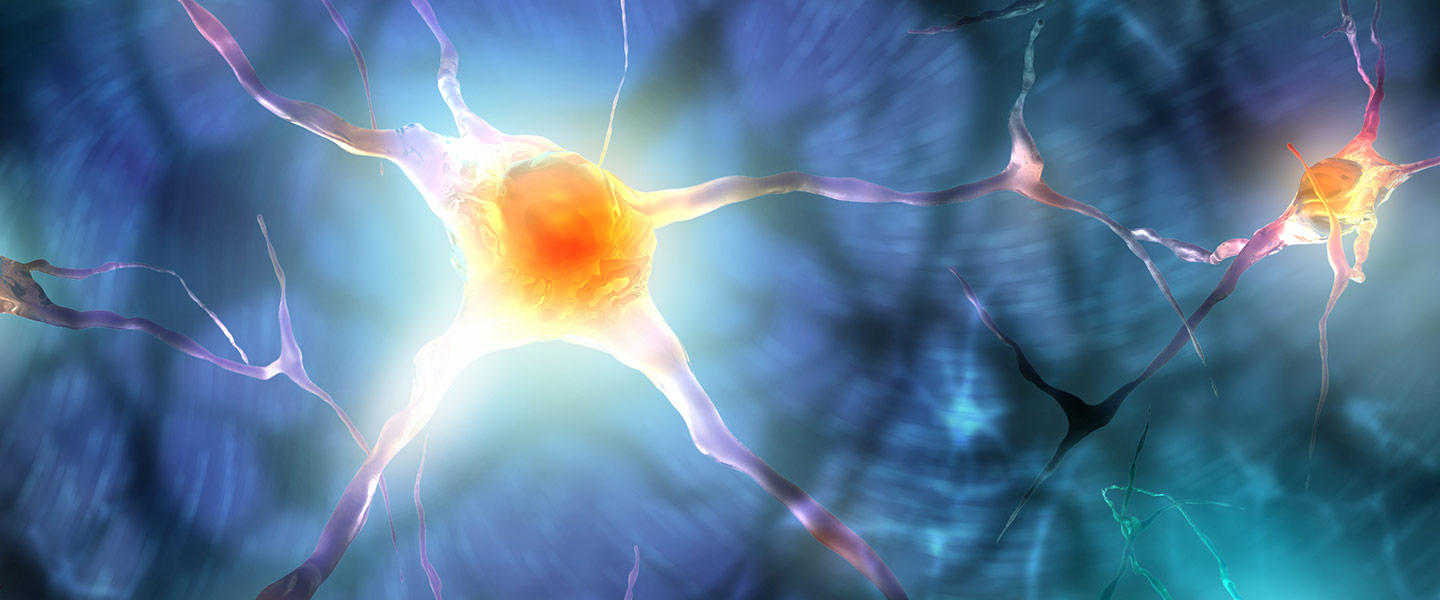Stem Cell Technology Offers Rare Inside View of Brain Development and Schizophrenia
Stem Cell Technology Offers Rare Inside View of Brain Development and Schizophrenia

Processes during brain development that can malfunction are believed to contribute to the onset of psychiatric illnesses, but identifying specific underlying mechanisms within the brain has proven difficult. A new technology that enables the “reprogramming” of patients’ skin cells to develop into other types of cells, including neural precursors and neurons (brain cells), has enabled a team of researchers at Johns Hopkins University School of Medicine to gain new insight into what brain mechanisms can cause schizophrenia to develop.
Working with this stem cell technology in their laboratory, the research team was able to induce human skin cells, collected by Judith L. Rapoport, M.D., 2009 NARSAD Distinguished Investigator Grantee, from individuals who had a genetic mutation in a region on chromosome 15 called 15q11.2—a region previously known to be irregular in schizophrenia, autism spectrum disorder and intellectual disability—to form neural progenitor cells (or precursor cells for neurons) in a dish. The team, led by the wife-and-husband team of Guo-li Ming, M.D., Ph.D., and Hongjun Song, Ph.D., 2010 and 2008 NARSAD Independent Investigator Grantees, respectively, report in a paper published July 3rd in the journal Cell Stem Cell that they identified a particular gene whose loss in these patients altered typical developmental brain processes.
There are actually four genes in the 15q11.2 region, but no firm linkages had yet been established between any of them and brain development processes. Drs. Ming, Song and team discovered that each of the patients’ cell samples was missing one of the normal two copies of the gene called CYF1P. Their experiments showed that the loss of this gene altered the skeletons of developing brain cells, which in turn disrupted the orderly layers those cells would normally form in the brain.
The researchers then worked with animal models to alter the genomes in mouse embryos so that they made less of the protein created by CYFIP1. The brain cells in mice turned out to have similar defects in structure to those in the dish-grown human cells. Having less CYFIP1 protein also caused some neurons in the developing mice to end up in the wrong layer within the brain. The reason, the team reports, is that CYFIP1 plays a role in building the skeleton that gives shape to each cell, and its loss affects spots called adherens junctions where the skeletons of two neighboring cells connect.
"This is an important step toward understanding what physically happens in the developing brain that puts people at risk of schizophrenia," said Dr. Ming, Professor of Neurology and Neuroscience. "During development, new neurons get in place by 'climbing' the tendrils of neural progenitor cells. We think that disrupted adherens junctions don't provide a stable enough anchor for neural progenitors, so the 'rope' they form doesn't quite get new neurons to the right place."
The researchers also found that CYFIP1 is part of a complex of proteins called WAVE, and since many people with a CYFIP1 deletion do not get schizophrenia, they suspected this alteration in how skeletons of developing brain cells are built may involve another defect in the WAVE complex. They teamed up with 2013 NARSAD Distinguished Investigator Grantee Joel E. Kleinman, M.D., Ph.D.; Daniel R. Weinberger, M.D., 1990 and 2000 NARSAD Distinguished Investigator Grantee; and others at the Lieber Institute for Brain Development at Johns Hopkins, to examine DNA of a large group of people with schizophrenia, focusing on genes, including CYFIP1, that are involved in regulating this developmental process. They found a variation in another WAVE complex signaling gene that, combined with the CYFIP1 deletion, increased the risk of schizophrenia more than either genetic change by itself.
The research team reports that they have “illustrated the potential of using human induced pluripotent stem cells—iPSCs—as a leading discovery tool in tackling the mystery of complex psychiatric disorders” and say that this shows how other mental illnesses might be similarly investigated.
Other NARSAD Grantees involved in the study:
Kimberly M. Christian, Ph.D., 2012 NARSAD Young Investigator Grant; Thomas M. Hyde, M.D., Ph.D., 1989 NARSAD Young Investigator Grantee; and Dan Rujescu, M.D., Ph.D., 2006 NARSAD Independent Investigator Grantee.


